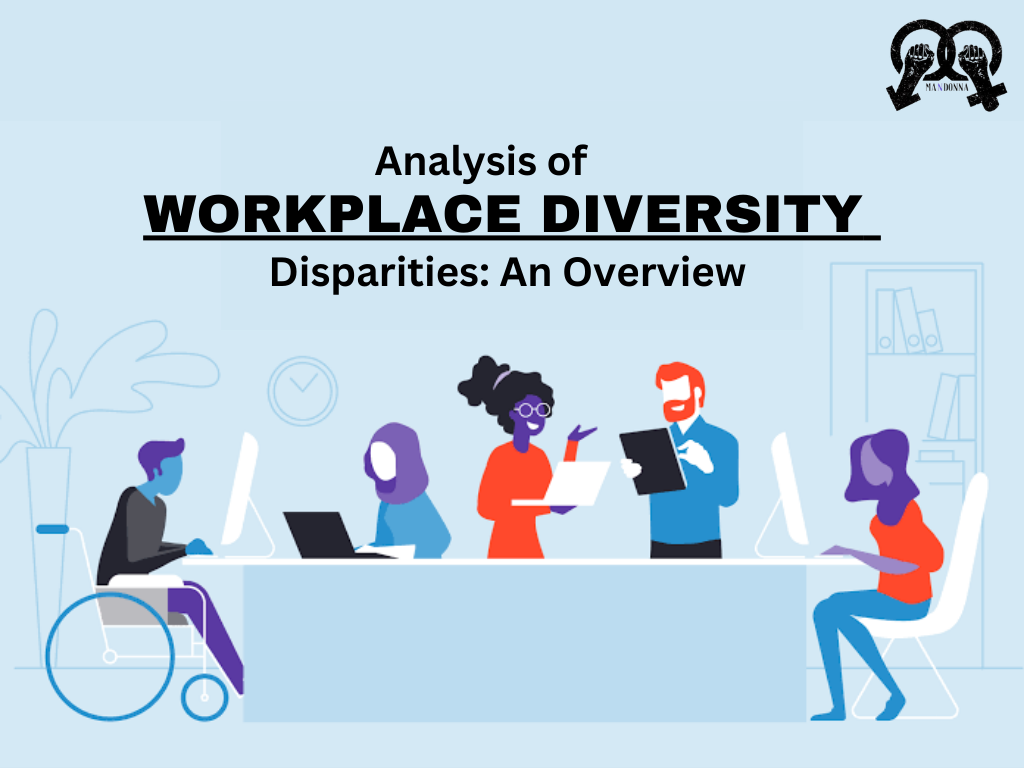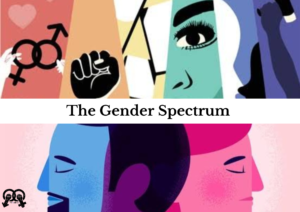This report presents a comprehensive analysis of the lack of diversity within the workplace, utilizing data to uncover underlying trends and patterns. The study investigates key indicators such as representation, inclusion, and equity across various dimensions, shedding light on the challenges faced by marginalized groups. By employing specialized statistical methods, this report aims to provide a nuanced understanding of the current state of workplace diversity.
Diversity extends beyond stereotypes, valuing differences, and fostering unity. Incorporating independent thinking for common goals is crucial. Businesses increasingly recognize the positive impact of a diverse internal workforce on revenues, employee performance, and company culture.
Workplace diversity statistics reveal that almost half of employees believe leaders can enhance inclusive policies. Here are the latest stats and strategies for managing workplace diversity.
Top Diversity in the Workplace Statistics
- Diversity in the workplace matters to 67% of job seekers.
- 78% of employees perceive a lack of diversity in leadership positions.
- Only 1% of Fortune 500 companies have CEOs of color.
- Two-thirds of women believe their company provides equal opportunities to all backgrounds.
- 55% of employees claim their organizations promote Diversity and Inclusion (D&I) policies.
- Companies with diverse leadership experience a 19% revenue growth.
- Businesses open to inclusion have a 120% higher chance of achieving financial goals.
- An increasingly diverse workforce could boost GDP by 26%.
General Diversity Facts and Stats
- Over half of the US workforce comprises women.
- Millennials and Gen Z are the most diverse generations.
- Approximately 20% of people with disabilities are employed.
- Women are the sole breadwinners in only 6.8% of cases.
Diversity and Inclusion Statistics to Level Up Your Business
- Workplace diversity is important to 67% of job seekers.
- 74% of millennials believe inclusion fosters innovation.
- Workforce diversity is a priority for 85% of employers.
- 78% of employees see a lack of diversity in leadership positions.
- 71% of employers struggle to find diverse candidates for senior roles.
- Only 1% of Fortune 500 companies have CEOs of color. Technological Enablers:
- Both men and women prefer hiring men, hindering gender diversity.
- Two-thirds of women believe their company offers equal opportunities.
- 40% of black women face professional judgment, highlighting workplace microaggressions.
- The tech sector is dominated by white or Asian American men.
- 70% of employees in their 50s are not offered promotions.
- 55% of employees claim their organizations promote D&I policies.
Benefits of Diversity in the Workplace Statistics
- Employees of diverse companies bring in 2.3 times higher cash flow.
- Revenues of companies with diverse leadership grow by 19%.
- Diversity boosts innovation by 1.7 times.
- Gender diversity at an executive level leads to 21% higher performance.
- Women executives deliver 34% higher returns to shareholders.
- Inclusive businesses have 120% higher chances of achieving financial goals.
- The majority of CEOs with D&I cultures note profit growth.
- 73% of employers link diversity to creative thinking.
- An increasingly diverse workforce could scale up the GDP by 26%.
- Companies with high racial diversity attract more customers.
- Blind applications increase diversity hiring chances.
- 78% believe there is a competitive advantage to diversity and inclusion.
Strategic Imperatives for Cultivating Workplace Diversity: Introduction:
As we traverse the complex landscape of contemporary organizational dynamics, the optimization of workplace diversity emerges as an imperative lever for sustainable success. In this discourse, we delve into jargon-laden strategies, dissecting the intricacies of making workplaces truly diverse.
Leveraging Inclusive Paradigms:
Operationalizing diversity mandates an overhaul of ingrained paradigms, fostering an ecosystem that champions the inclusion of multifaceted talent pools. This necessitates recalibrating organizational DNA to seamlessly integrate individuals across the pantheon of age, race, gender, sexual orientation, and cognitive abilities.
Strategic Frameworks:
Crafting a diverse workplace necessitates the deployment of strategic frameworks. From implementing intersectionality-aware hiring processes to enacting policies that mitigate unconscious biases, organizations must adopt a multifaceted approach. The strategic frameworks should be informed by the contextual nuances of the industry, embedding diversity as a core value proposition.
Holistic Talent Acquisition:
In the jargon-laden lexicon of modern HR, diversity is not merely a checkbox; it’s an intricate dance of holistic talent acquisition. Organizations should pivot towards targeted sourcing methodologies, leveraging data-driven insights to identify and attract candidates from underrepresented demographics. This involves synergizing with diversity-focused recruitment platforms and employing advanced analytics for predictive talent mapping.
Inclusive Leadership Development:
Nurturing diversity necessitates a paradigm shift in leadership development. Jargon-laden terms like “inclusive leadership” underscore the imperative for leaders to cultivate self-awareness, cultural intelligence, and empathy. Leadership programs should be augmented with modules on dismantling systemic biases and fostering an environment where diverse voices resonate.
Data-Driven Diversity Metrics:
In the data-centric realm of contemporary business, jargon such as “diversity metrics” takes centre stage. Organizations must deploy robust analytics to measure the efficacy of diversity initiatives. Metrics should transcend mere headcount statistics, encompassing employee engagement, advancement rates, and inclusion indices. This data-driven approach facilitates agile recalibration of strategies based on real-time insights.
Cultivating Inclusive Cultures:
The jargonized pursuit of diversity is incomplete without cultivating inclusive cultures. This involves instituting Employee Resource Groups (ERGs), where affinity networks become crucibles for ideation. Leaders must champion open dialogue through mechanisms like town halls and feedback loops, fostering an environment where diverse perspectives flourish.
Technological enablers
In the tech-driven tapestry of contemporary workplaces, jargon like “technological enablers” comes to the fore. Leveraging AI-driven tools for blind recruitment processes and deploying inclusive communication platforms ensures that technology becomes a catalyst for diversity, not a bottleneck.
Continuous Learning Ecosystems:
In the jargon-laden landscape of professional development, organizations must establish “continuous learning ecosystems.” This involves curating a dynamic array of training programs focused on diversity, equity, and inclusion. Gamified learning modules and immersive experiences amplify engagement, ensuring that diversity remains a core tenet of organizational evolution.
Best Approaches to Managing Diversity in the Workplace
- 56% of businesses believe diversity strategies should be developed by senior management.
- 86% of employers believe managers should undergo anti-bias training.
- Company-organized social events promote diverse workforce collaboration.
These strategies and statistics emphasize the importance of diverse and inclusive workplaces for enhanced performance, innovation, and financial success.
Defining Diversity in the Workplace:
Diversity encapsulates the inclusive integration of individuals across various dimensions such as race, gender, age, sexual orientation, cultural background, and abilities. It extends to embracing the unique characteristics of each individual, fostering an environment that transcends both internal and external differences.
Key Areas of Diversity:
The six pivotal facets of diversity encompass age, race, national origin, disability, religion, and gender. Legal ramifications underscore the imperative need to prevent discrimination in the workplace based on these characteristics.
Dimensions of Workplace Diversity:
- Internal Dimension:
- Inherent characteristics, unalterable by individuals (e.g., race, age, gender, national origin, ethnicity, physical and mental ability).
- External Dimension:
- Characteristics defining a person but amenable to change (e.g., interests, citizenship, education, religious affiliation, relationship status, socioeconomic status).
- Organizational Dimension:
- Pertains to the organizational context, encompassing job function, management status, work location, department, seniority, union affiliation, etc.
- World Views Dimension:
- The influence of individual observations, experiences, and feelings on their worldview, encompasses political stance, historical knowledge, and cultural events.
Promoting Diversity Strategies:
For organizations committed to embracing diversity, strategic initiatives abound. Jargonized approaches include:
- Policy Framework Development:
- Establishing diversity-friendly policies to cultivate inclusive teams, involving comprehensive reviews of employee benefits and provision of diversity training or mentorship.
- Inclusion Training for Managers:
- Implementing inclusion strategies, and offering managers specialized training to comprehend the business benefits of diversity, as validated by diversity in the workplace statistics.
- Cultural Sensitivity Initiatives:
- Introducing measures such as flexible working hours, on-site daycare, and granting days off for religious observances to exhibit cultural sensitivity and inclusion.
- Holistic Diversity Integration:
- Cultivating an organizational culture that not only accepts but actively seeks diversity, recognizing its intrinsic value in fostering innovation, profitability, and competitive advantage.
Workplace diversity in third-world countries holds both challenges and opportunities, and its implications are multifaceted. Here are key considerations:
Challenges:
- Societal Norms and Bias:
- Implication: Deep-rooted societal norms and biases can hinder the acceptance of diversity. Cultural norms in some third-world countries may be less receptive to certain aspects of diversity, such as gender or ethnic diversity.
- Impact: This can lead to exclusionary practices, limiting the full utilization of the available talent pool.
- Educational Disparities:
- Implication: Disparities in education levels among different demographic groups can create challenges in providing equal opportunities.
- Impact: Limited access to quality education can contribute to a lack of diverse skill sets within the workforce, impacting innovation and productivity.
- Limited Legal Frameworks:
- Implication: Some third-world countries may lack comprehensive legal frameworks promoting diversity and prohibiting discrimination.
- Impact: Without clear legal guidance, employees from diverse backgrounds may face unequal treatment, affecting their career advancement and job satisfaction.
- Economic Disparities:
- Implication: Economic disparities can exacerbate existing social inequalities, influencing who has access to certain job opportunities.
- Impact: This may result in certain groups being concentrated in lower-paying or less prestigious jobs, perpetuating inequality.
Opportunities:
- Rich Cultural Diversity:
- Implication: Third-world countries often boast rich cultural diversity, encompassing various languages, traditions, and perspectives.
- Impact: Leveraging this diversity can enhance creativity, problem-solving, and the ability to cater to a diverse market.
- Untapped Talent Pool:
- Implication: Diverse backgrounds bring a wealth of untapped talent and unique perspectives to the workplace.
- Impact: Embracing this diversity can lead to increased innovation, adaptability, and a broader skill set within the workforce.
- Community Engagement:
- Implication: Companies can actively engage with local communities to understand their unique needs and challenges.
- Impact: Building trust and understanding can contribute to positive relationships, fostering a supportive work environment.
- Global Competitiveness:
- Implication: Embracing diversity aligns with global trends and can enhance a country’s competitiveness on the international stage.
- Impact: Diverse workplaces are often better equipped to navigate global markets, attracting international partnerships and investments.
- Corporate Social Responsibility (CSR):
- Implication: Demonstrating a commitment to diversity aligns with CSR principles, positively impacting an organization’s reputation.
- Impact: Companies that prioritize diversity may be seen as socially responsible, attracting a more diverse customer base and potential business partners.
Recommendations:
- Education and Awareness Programs:
- Recommendation: Implement programs to raise awareness about the benefits of diversity and provide training on inclusive practices.
- Legal Reforms:
- Recommendation: Advocate for and support legal reforms that promote diversity, equity, and inclusion in the workplace.
- Collaboration with NGOs:
- Recommendation: Collaborate with non-governmental organizations (NGOs) working on diversity and inclusion to leverage their expertise and networks.
- Skill Development Initiatives:
- Recommendation: Invest in skill development initiatives to bridge educational gaps and empower individuals from diverse backgrounds.
- Diversity Metrics and Reporting:
- Recommendation: Establish metrics to measure diversity and regularly report on progress, fostering transparency and accountability.
Conclusion
In conclusion, the pursuit of workplace diversity demands a strategic recalibration of organizational ethos, a nuanced understanding of jargonized paradigms, and an unwavering commitment to fostering inclusive cultures. As organizations navigate this terrain, the synthesis of strategic frameworks, data-driven insights, and technological prowess becomes the crucible for cultivating truly diverse and resilient workplaces.
Authorship Credits
Kaushiki Ishwar is a 3rd-year Philosophy student at Miranda House and a Research Intern at Mandonna
Graphics Credits
Sabia is a graphic designing intern at Mandonna





